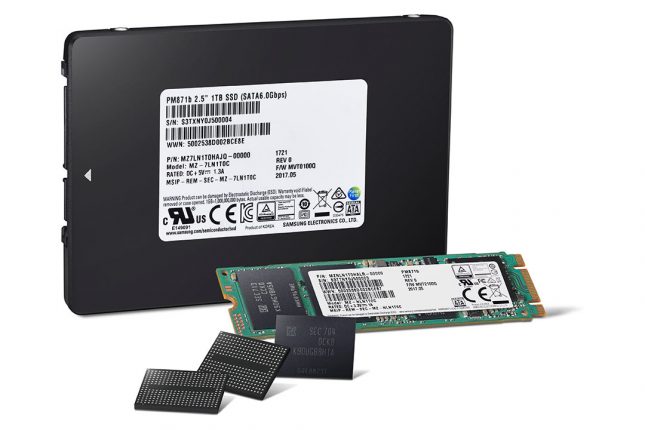Samsung 64-layer, 256Gb V-NAND Flash Memory Volume Production Begins
Samsung has announced that it has kicked off volume production for its latest advanced memory technology in the form of the 64-layer, 256Gb V-NAND flash memory. That flash memory will be used in an expanding line up of storage solutions for servers, PCs and mobile applications. Samsung is currently producing the first SSD in the industry using the new V-NAND chips that started in January for what it calls key IT customers, and has been working on a number of mobile and consumer storage solutions with the chips.
The mobile and consumer products using the new chips will land later this year. These new V-NAND chips are normally called 4th generation V-NAND and by the end of 2017 production of these chips will cover nearly 50% of the monthly NAND flash production.
Samsung’s new chips have data transfer speed of 1 Gbps, the fastest speed among currently available NAND flash memory. Samsung claims that its new chips also have the industry’s shortest page program time, known as tPROG, of 500 microseconds. Samsung says that the new 64-layer 256Gb V-NAND has more than a 30% productivity gain compared to the 48-layer 256Gb V-NAND that came before it.
The new 64-layer product has a 2.5V input voltage for circuits making it 30% greater in energy efficiency than the 3.3V 48-layer product that it replaces. Reliability of the new V-NAND cell is increased by 20% compared to the predecessor tech as well. Samsung says that many of the gains it made in the new 4th generation product are thanks to the ability to introduce multi-billion channel holes that penetrate several dozen layers of cell-arrays and minimize the loss of electrons from about 85.3 billion cells.
These holes were made in a way where the channel holes are homogeneous in their shape from the top to bottom layer and disperse the weight of all layers to improve the stability of the channel holes. Samsung says that it has secured the fundamental tech needed to produce V-NAND chips with one terabit capacity and more by stacking over 90 layers.

